Don't wanna be here? Send us removal request.
Text
Do Cats Drink Water? Cat Hydration & Dehydration Prevention
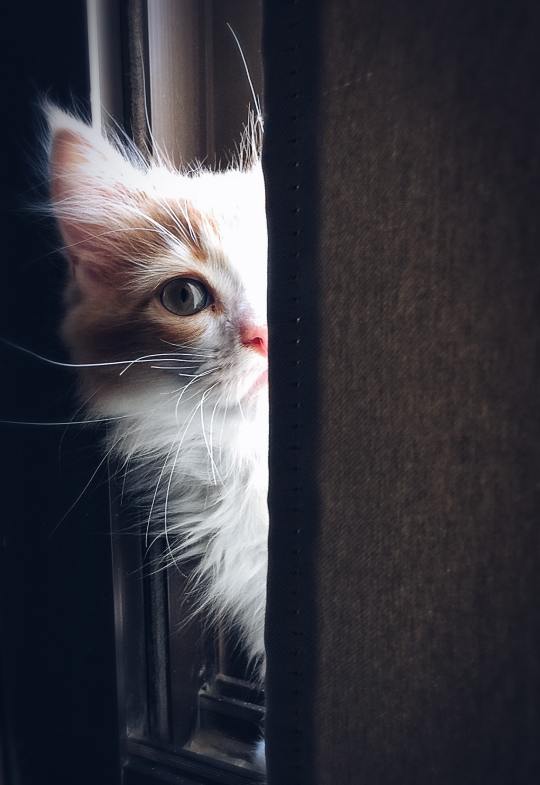
Yes, they do. Although movies and other media often show cats drinking a bowl of milk, it’s not good for most felines.
Water, however, is as vital to a cat’s survival as it is to that of humans. 60-70% of their body weight is water. Despite being good for them, many cats don’t like drinking water, especially if it’s still or standing water. This dislike for water can lead to a dehydrated cat, so it’s important to monitor your cat’s water intake.
Why is Proper Hydration Important for Cats?
Hydration is the physiological state of balanced electrolytes, specific minerals and fluids within the body, and maintaining this balance is important. Water is vital because it affects everything from organ function and nutrient transportation to circulation and digestion.
It also helps decrease the likelihood of urinary stones and helps the kidneys flush out toxins.
All cats are different and have their own preferences, though. As a result, you may need to try a few different methods of providing water to find something your kitty likes.
What Causes Dehydration in Cats?
Cats can become dehydrated for a number of reasons. One of the primary reasons is it’s in their genes. Felines evolved from desert dwellers, and therefore have a low thirst drive and can survive on less water than their canine counterparts.
Cats have near-sightedness issues, so it may be hard for cats to visualize the edge of the water in a bowl. Additionally, when cats lap water from a bowl, they curve their tongue into a J-shape and bite off a column of water, which is incredibly inefficient. Cats only end up with 3/100 of a teaspoon per lap!*
Plus, cats are sensitive to the taste and presentation of water. Most cats instinctively gravitate toward fresh, moving water.
Conditions that make cats more prone to dehydration include chronic kidney disease and other conditions, such as diarrhea or diabetes.
Signs of Dehydration in Cats
If your cat neglects her water bowl, she may become dehydrated. Signs of a dehydrated cat include:
Dry gums
Lethargy or depression
Loss of appetite
Decrease in skin elasticity
Elevated heart rate
You may have a dehydrated cat on your hands if you gently pinch the skin over her shoulders and the skin stays gathered when you release it. This is known as “skin tenting” and is a sign of dehydration.
If you notice any of the above signs, call your veterinarian. They can give your cat fluids, rule out any potential illnesses and offer guidance on preventing dehydration in the future.
How Much Water Should a Cat Drink?
Cats need varying amounts of water based on their weight and the type of food they eat (dry kibble or canned wet food).
It’s difficult for even the healthiest of cats to drink the right amount of water because of the unique shape of their tongues. A single lap of water only provides a cat with 3/100 of a teaspoon.*
Although many cats struggle to stay hydrated, some cats can drink too much water. If your cat drinks more water than usual, it may be a sign of feline hyperthyroidism or diabetes.
How to Get a Cat to Drink Water
Getting your cat to drink more water can be tricky. You may have to experiment until you find something she likes. Start with one or more of the following suggestions to see how your cat reacts.
Choose the Right Water Bowl: If your cat’s current water bowl is deep and narrow, it may touch her whiskers, which is uncomfortable. Try switching your cat’s water bowl to a wider, shallower dish with a smaller lip to see if she drinks more.
Place it in the Right Location: Although it’s tempting to stick your cat’s food and water bowls in an out-of-the-way area, cats don’t like being boxed into a corner. They prefer locations where they can see their surroundings with a quick glance and don’t have to worry about anyone sneaking up behind them. See if moving her water bowl to a new location helps.
Keep it Fresh: The longer water sits, the more particles it collects. Dust, dirt, hair and more can all collect in your cat’s water bowl, making her less inclined to drink from it. Put fresh water in her bowl one to two times a day.
Try a Cat Water Fountain: Cats love running water and there are many theories why. It may also appeal to more of their senses, as they can see it move, hear the sound it makes and even taste a difference. A cat water fountain can make drinking water more exciting and pleasurable for your kitty.
Add Wet Cat Food to Her Diet: Water isn’t the only way to keep your cat hydrated. If you’ve tried all the above and she’s still not drinking enough, try hydrating with wet cat food or broths. Although it can’t replace water altogether, supplementing with wet food can help increase her overall water intake to help prevent dehydration.
For some cats, even the fanciest water bowls and cat fountains and the most delicious wet foods aren’t enough. If your cat still isn’t drinking enough water, talk to your veterinarian. They may recommend a cat hydration supplement or give you more tips to help increase your cat’s water intake.
Not only do cats drink water, but it’s vital for their survival. Keeping your cat hydrated will help keep her happy and healthy. Explore all the wet cat food options we offer to help increase your cat’s total water consumption. Always check with your veterinarian before adding new food to your cat’s diet.
0 notes
Text
Is Friskies a good cat food?

Is Friskies a good cat food?
Yes. Absolutely. 100%!
Friskies is committed to providing quality nutrition that fuels your furry family member, and flavor varieties that keep mealtime fun and exciting!
Cat owners can check out thousands of Friskies cat food reviews to see why more than 20 million cats eat and enjoy Friskies products every day. The quality and safety of Purina products are our top priorities, and we have strict quality control standards. Friskies products are formulated with cats in mind to deliver just the right balance of tasty nutrition in cats' favorite varieties.
Rumors About Friskies Quality
Unfortunately, as with many companies, there are rumors that raise questions about the quality of some Friskies products. We are aware of these rumors and want you to know they are false.
Friskies is 100% Safe to Feed Your Cat
Consumers can trust all Friskies products including those stamped with codes 1157, 1159, and 1161.
The numbers being shared are not batch codes, they are codes indicating the factory locations where we make Friskies cat food. These codes are stamped on all of our canned products. We have total confidence that all of Friskies products, including cans of Friskies, are safe.
Friskies products are made in our U.S. factories by our skilled, passionate employees who are proud to make quality pet food for millions of pets. Part of our quality control process includes thousands of checks throughout the production process. We have full confidence in our Friskies products due to our extensive quality and safety controls.
If You Have Feedback
We want to hear from you if you have feedback on any Friskies product. We always take consumer feedback seriously and work hard to gather as much information as possible. We are here to help.
Have Questions About Pet Food Recalls?
If you are seeking information on pet food recalls, the FDA is a great resource. They keep a list of pet food recalls.
0 notes
Text
Wet vs. Dry Cat Food: Which is Better?
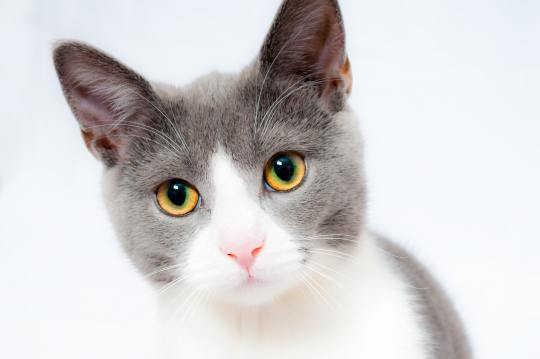
When it comes to cat food, there are so many options. Loving cat owners must choose from a variety of different flavors, decide between wet and dry, among many other considerations.
If you’ve wondered which is better when it comes to wet vs. dry cat food, they’re both excellent choices. Just make sure the food you select is 100 percent complete and balanced for your cat’s age and life stage. While some cats (and cat owners) prefer one over the other, the best option may be to feed your cat both.
Wet vs. Dry Cat Food
Wet Cat Food
You’re probably familiar with the wet food in cans, but you may also find it in pouches. Both “come in small sizes, making it easy to provide a variety of different flavors, and for some, smaller sizes may make portion control easier,” says Purina Veterinary Nutritionist Dr. Dorothy Laflamme.
Wet cat food has at least 65 percent or more moisture content. As a result, “wet food should not be left out for more than 30 to 60 minutes at a time to prevent bacterial growth,” according to Laflamme.
Wet cat food offers many benefits, though, including:
Textures and ingredients cats love
Easier for cats to chew
More variety in diet
Helps increase total water intake
Although feeding wet food to your cat seems special or indulgent, it’s more than a snack or treat. Wet cat food is 100 percent complete and balanced and can be an essential part of any cat’s diet.
Dry Cat Food
Dry kibble is popular among many cat owners because it’s convenient. It comes in larger bags and because its moisture content is less than 20 percent, it has a longer shelf life, even after opening. This makes it more cost effective.
There’s less risk of bacterial growth with dry food, so you can leave it out all day for your cat to graze on while you’re at work. Crunchy kibble also helps reduce plaque and tartar buildup on cats’ teeth. Dry cat food may be more difficult for older cats to chew, however.
Is Wet or Dry Food Better for Cats?
Ultimately, your cat will decide whether she prefers dry or wet cat food. Purina nutritionists recommend feeding a combination of wet and dry food, though. This helps ensure she gets plenty of moisture in her diet, plus the dental benefits of dry food, all while adding variety to keep her interested.
Cats are neophiliacs, meaning they appreciate trying new things. They may get bored eating the same food the same way day in and day out. Mixing wet and dry cat food for a meal or feeding them at separate meals is a good way to give your cat the variety she not only wants, but also needs.
Catering to your cat’s needs and desires also strengthens your emotional connection. One reviewer wrote: “My kitties love Fancy Feast already and they quickly gobbled up the Creamy Delights! Received extra kitty lovin’ after this awesome treat!”
Shop Wet Cat Food
If you’ve never tried feeding wet cat food, explore the wide variety of options Purina offers. You may need to try several brands until you find a couple your cat likes. Fortunately, Laflamme reminds, “there are hundreds—if not thousands—of good quality cat foods available at grocery stores, pet specialty stores, online and through veterinarians.”
It’s also a good idea to try a few different serving methods. Some cats prefer their wet food “fluffed” and served on a flat plate or wide, low-edged bowl. Others will eat straight out of the can. Once you find a food and serving method your cat loves, she’ll enjoy eating a mix of wet and dry cat food on a regular basis.
0 notes
Text
How Can I Prevent Dog Diabetes?
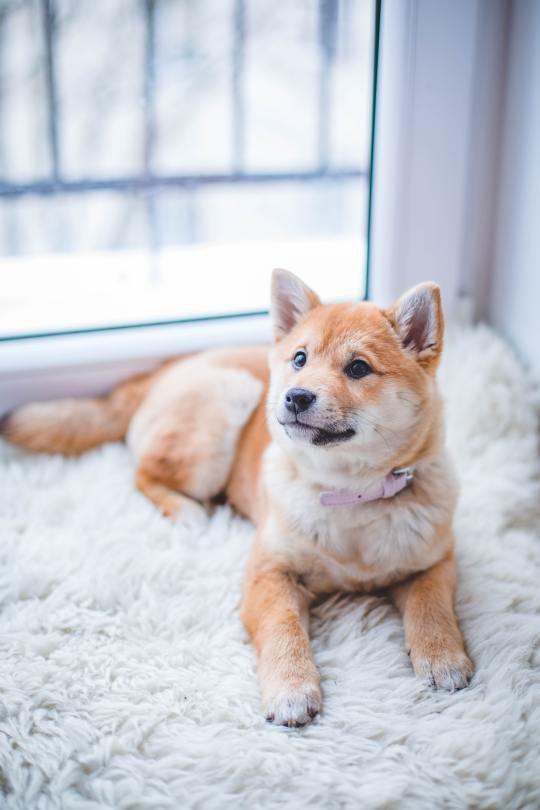
Dog Diabetes
What causes diabetes in dogs? What should you do if your dog has diabetes? Understanding this complex disease will help you get a head start on limiting your dog’s chances of getting it.
Understanding Dog Diabetes
Diabetes is caused by a lack of insulin, the hormone that regulates how sugar is absorbed and used by cells and tissues in the body. It most often afflicts dogs between the ages of 5 and 7, and female dogs are more susceptible to it than males.
Know the Symptoms of Diabetes
Every dog is unique, and no one knows your dog better than you do. Keep an eye out for irregularities in your dog’s behavior if you suspect he may be at risk for diabetes.
Watch for:
Sudden extreme thirst.
A frequent and urgent need to urinate.
Notable exhaustion and lower than normal activity.
Obesity.
Consult Your Veterinarian
Have your veterinarian give your dog a thorough examination to determine whether or not he has diabetes, prediabetic symptoms, or a disposition for diabetes. Your vet can help you form a diet and exercise plan to maintain and improve your dog’s health, as well.
While there is no sure cure for diabetes, hopefully some of the information in this article can help you better understand it.
0 notes
Text
How Do I Know if My Cat or Dog Is Overweight?
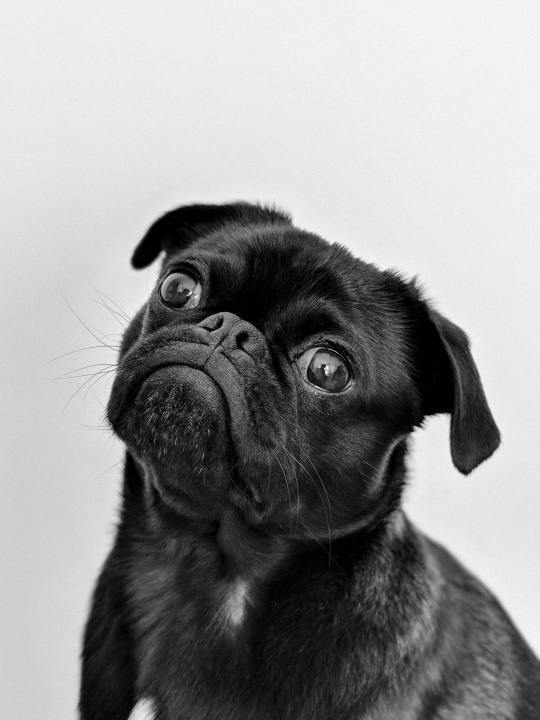
It’s easy to determine if your dog is overweight or your cat is obese. Follow these three steps to do a body score check at home.
Body Score Steps
1) Feel for ribs
“Run your fingers along the ribs, both sides, and see how easily you can palpate those ribs, feel them. In an ideal body-condition score, it should feel like running your fingers over pencils in a breast pocket,” says Purina veterinarian Dr. Zara Boland. Using your hands is important. Looking isn’t enough to determine if your dog or cat is overweight since her coat of may make a visual check difficult.
2) Check the waist
“The next thing you want to feel is a nice waistline.” An overweight dog or overweight cat won’t have “an hourglass shape when you look down from above and you can feel that by running your hands along the ribs and they should tuck in as soon as you reach the end of the ribs and come to the waist. It’s ideal body-condition score for us, we want the same for our pets,” says Boland.
3) Take a side view
“And the last thing you’re looking for is what we call a tummy-tuck. So when you view your pet from the side, you want the tummy to tuck up backwards towards the hind legs. We don’t want a hanging belly-we’re looking a nice, neat, tummy-tuck,” says Boland. That said it’s also important to know if your cat or dog’s breed makes them appear overweight. Your veterinarian can provide insight on this.
It’s Time to Make Changes
If the body check indicates your cat is too large or your dog is overweight, it's time to change the routine and habits you’ve set. Just like you, weight loss for your cat or dog comes down to calories. To shed pounds, your cat will need to burn more calories than she consumes, and your dog will need to do the same. Look to make a change to both diet and exercise for successful results.
Reduce calories:
Empty calories—ones that do not have health benefit--add up quickly. Select a food that is complete and balanced and cut out all extra calories:
Eliminate table scraps
Limit treats (no more than 10% of daily calories)
Feed foods with balanced nutrition
Consider a healthy weight management food for dogs or cat
Develop a holistic dietary plan with your vet
Increase exercise indoors and outdoors:
Cats and dogs both enjoy being active. Stimulate them inside or outside to build muscle strength, burn calories and promote fitness:
Take long walks or run and hike regularly
Create indoor challenges for climbing and jumping
Present stimulating/interactive toys that simulate hunting
0 notes
Text
Is My Dog a Healthy Weight? Too Fat, Too Thin Or Just Right?
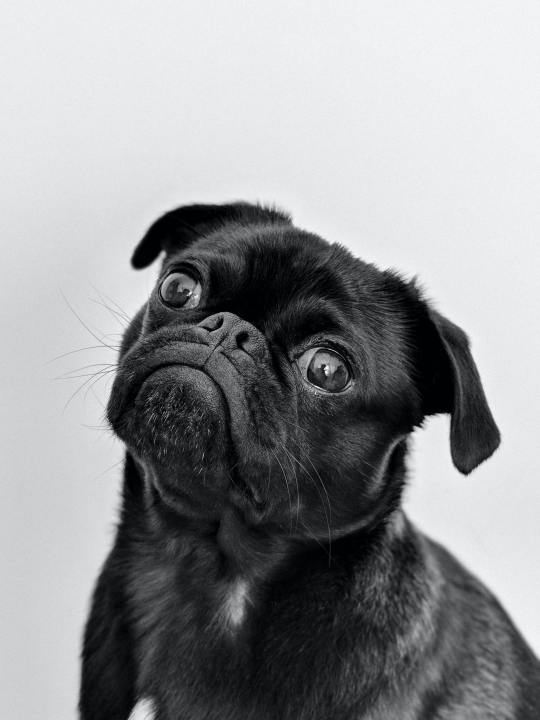
Assessing Your Dog’s Weight
Maintaining a healthy weight is one of the most important concerns when it comes to your dog’s health. Factors like diet and exercise in the right amounts can help keep your dog at an ideal weight.
Do You Need to Adjust Your Dog’s Diet?
Here are 3 simple ways to tell if your dog's diet needs an adjustment.
Rib Check: Place both of your thumbs on your dog's backbone and spread both hands across his rib cage. You want to be able to feel his ribs. Actually feeling your dog is important, as the coat of many dogs will make a visual check difficult.
Profile Check: Examine your dog's profile – it’s best if you are level with your dog. Look for the abdomen to be tucked up behind his rib cage - this is ideal.
Overhead Check: Looking at your dog from overhead, identify whether you can see a waist behind his ribs. Most dogs at a healthy weight should have an hourglass figure.
If you find that your dog's ribs and waistline aren't where they're supposed to be, adjust the amount of food offered accordingly. Hopefully these tips will help you keep your dog healthy and fit.
0 notes
Text
Proper Dog Hydration to Prevent Heat Stress
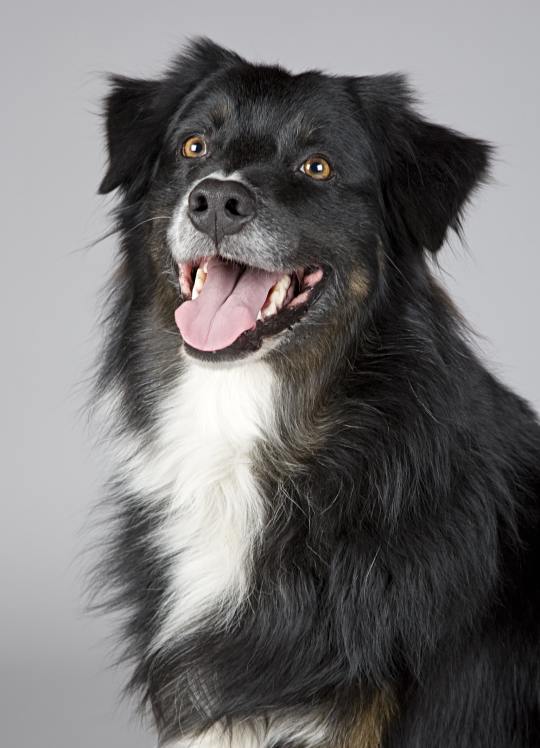
Dogs that do not receive adequate hydration during workouts are at risk of suffering from heat stress. Especially during warm, humid weather, it is important to provide frequent water breaks.
It is estimated that a dog’s water requirements may more than double when exercising in warm temperatures. The best way to ensure a dog receives adequate hydration is to give small amounts of water directly from a water bottle every 15 to 20 minutes during exercise.
After exercise, withhold access to clean, cold water until they have calmed down and quit panting. An overanxious dog gulping water can swallow air, causing discomfort or injury to the stomach.
0 notes
Text
Recognizing the Dangers of Overheating In Your Dog
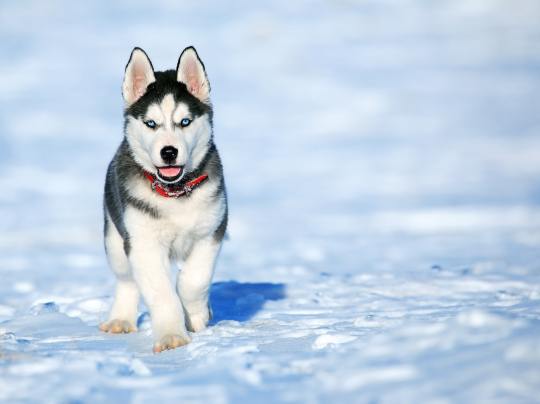
The potential for a dog to overheat can result in decreased performance as well as serious health conditions. A dog does not regulate his body temperature by sweating. Most adult dogs are good at controlling their body temperatures, except when they are put in stressful situations.
It is important to be aware of the signs of overheating, so you can take steps to avoid problems. “While a slight case of overheating will cause discomfort, the situation can advance to serious health problems if not attended to immediately,” says Purina Director of Sporting Dog Programs Bob West. “As a dog’s body temperature rises, the dog compensates by panting. Panting draws cooler air to the back of the throat and across the tongue, which cools the blood circulating to the core of the dog.”
High humidity adds to the risk of overheating because it reduces the effect of panting since the saliva evaporates less quickly. While panting is an effective short-term solution, it is an inefficient method of lowering body temperature in the long run because the panting itself uses energy and that generates additional heat.
Watch for these signs:
Panting is the first sign a dog is at risk of overheating.
If the panting escalates to forceful panting, it is time to cease all activity.
As a dog tires, he becomes less animated and his facial expression may show concern or apprehension.
A stressed dog may slow his pace and cover less ground.
Lower tail carriage and less tail action are common.
West encourages owners to carry a thermometer when working with dogs. Dogs perform best when their body temperature is near 102 degrees. They begin to shut down when their temperature approaches 105 degrees. It helps to exercise dogs for short periods in warm conditions and whenever possible in the coolest times of the day, avoiding high humidity.
0 notes
Text
What is Average Dog Weight?
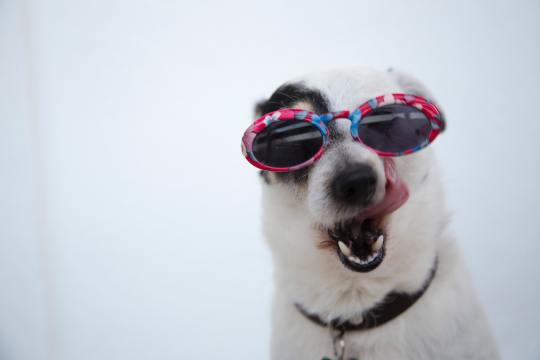
An estimated 56 percent of dogs in the U.S. are overweight or obese.* How do you identify a healthy weight goal for your dog if he’s overweight (or underweight)?
Most people turn to resources on the internet with an average dog weight or a range. Because all dogs are different, though, it’s not that simple.
Problems with Identifying an “Average” Dog Weight
Since dogs come in so many different breeds and sizes, it’s impossible to identify an average weight for all dogs. Weight may also depend on the dog’s sex and whether they’ve been spayed or neutered.
Although many resources provide an average weight range for different breeds, it’s usually significant. These ranges often don’t take the dog’s sex and other factors into consideration.
For example, a typical weight range you might see for a Labrador Retriever is 55 to 80 pounds. That’s a big range, and most female Labs shouldn’t weigh 80 pounds. They should fall on the lower end of the range.
Weight ranges also don’t account for the many mixed breed dogs out there. Just because the typical range for a Lab is 55 to 80 pounds doesn’t mean your Lab mix will or should fall within that range. It will depend on the other breeds he’s mixed with.
Plus, what if you don’t know the breed make-up of your mixed-breed dog? What then? Most resources say to use the dominant breed, but even then, you’re guessing what that is. An average dog weight or range definitely doesn’t work for mixed breeds.
A Better Solution for Determining Healthy Dog Weight
Rather than going off an average, which can be grossly inaccurate, we recommend using Body Condition Scoring (BCS). This system uses physical and visual observations of your dog to assess his current body condition and whether he’s over or underweight.
Your dog’s veterinarian uses this same system to determine whether your dog is over or underweight or healthy. See how to use BCS here.
What if My Dog is Overweight?
If you’ve used the BCS system or your veterinarian has said your dog is overweight, it’s time to make some changes. Your veterinarian may recommend switching to a weight management dog food to help your dog achieve and maintain a healthy weight.
For more tips on dog weight loss, like exercises for your dog, see our article How Can I Help My Dog Lose Weight?
What if My Dog is Underweight?
Many people spend so much time worrying about whether their dog is overweight that they fail to consider their dog might be underweight.
If your veterinarian says your dog is too thin, they may recommend a high-calorie dog food to help him gain weight. Once he’s at a healthy weight, a weight management formula can help him maintain it long-term.
Although it’s tempting to give your dog lots of treats and even people food during this time, it’s important not to overdo it. Even if your dog is underweight, treats should make up no more than 10% of his daily caloric intake. Otherwise he might put on too much fat and not enough muscle.
You should also not overlook exercise during this time, as it’s important for building muscle. Learn more in our How to Help Your Dog Gain Weight article.
Average Dog Weight is a Myth
There’s no “average’ because there are no average dogs. Each dog is unique and their ideal weight will vary based on several factors.
To learn more about dog weight and overall health, explore all our dog health articles. Browse all our weight management foods to find the right formula for your dog.
1 note
·
View note